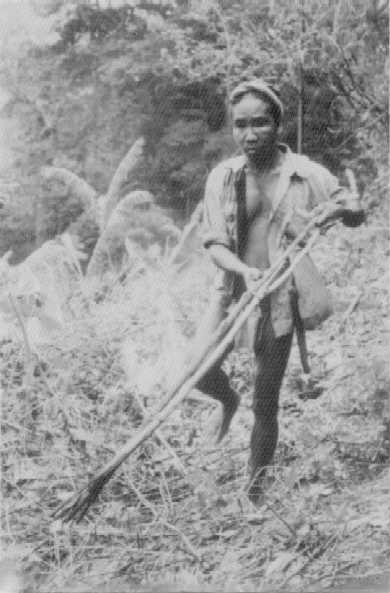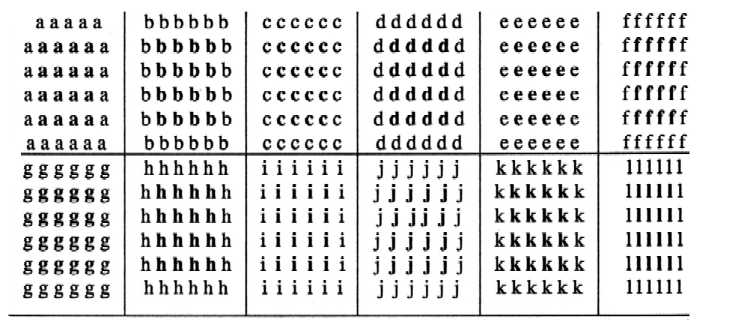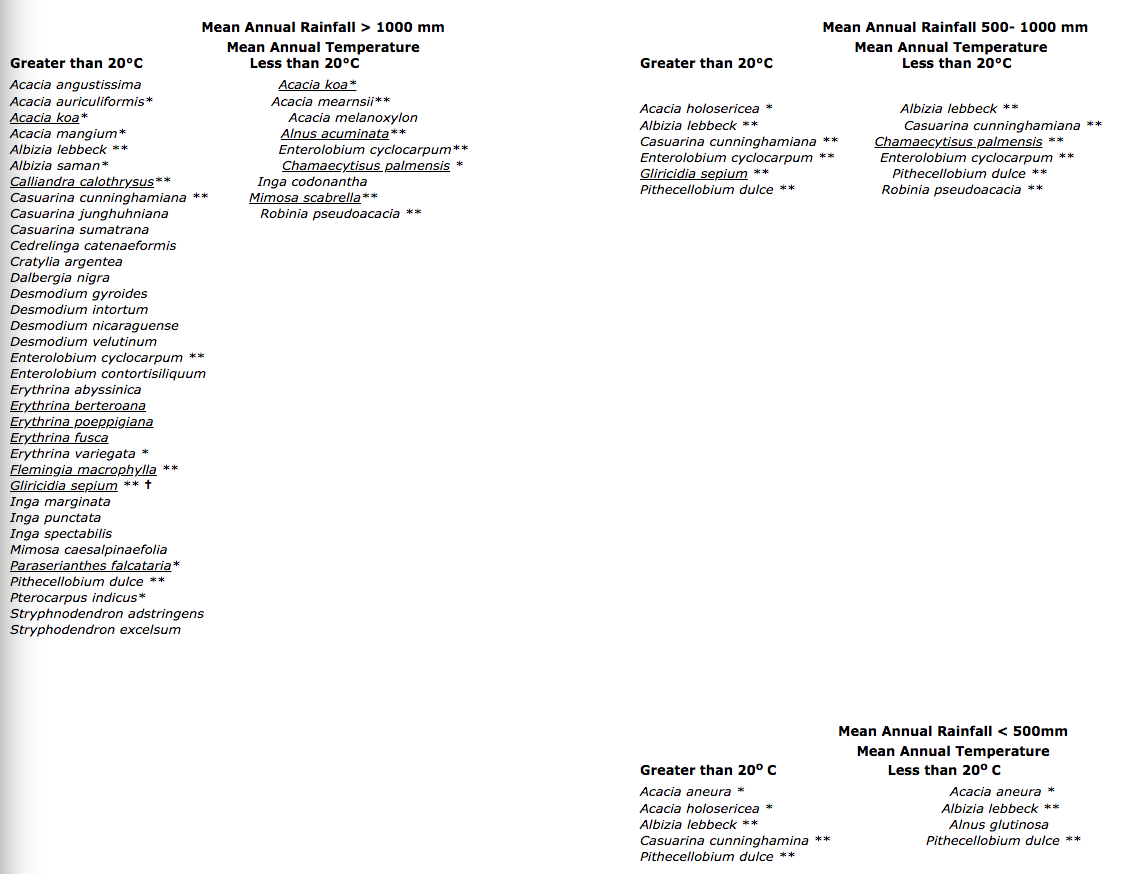
Selecting and testing nitrogen fixing trees for acid soils
Agroforestry for the Pacific Technologies
A publication of the Agroforestry Information Service
December 1994, Number 10
Acid soils-the problem
How to practice low-input sustainable agriculture on marginal soils is a dilemma for small-scale farmers and government agencies responsible for providing technical assistance. This dilemma is greatest in tropical countries where population pressure is intense and much of the soil is acid and contains toxic levels of aluminum (Caudle, 1991). In the humid tropics, the relative importance of acid soils is greatest in Latin America (81%), but also significant in Africa (56%) and Asia (38%) (Sanchez, 1987).

Tropical regions in which soils are likely to be acid or low in bases such as calcium and magnesium. Source: Caudle, 1991
By definition, any soil with a pH of less than 7 is acidic but the detrimental conditions for plant growth may not appear until soils have a pH of 5.0 or less. The main problems for plant growth on acid soils are infertility (low reserves of plant nutrients) and levels of exchangeable Al and manganese that are toxic to plants. Low nitrate levels and detrimental effects of high hydrogen ion concentration on plant growth may occur in some soils. The most common problem is aluminum toxicity, which generally inhibits root penetration below 15-20 cm. Manganese toxicity may be associated with higher pH levels than Al toxicity.
Soil acidity and aluminum toxicity constrain agricultural production in several ways. Farmers are limited to planting crop species or cultivars that tolerate such conditions. Many acid soils “fix” or hold phosphorus, making it unavailable for plant growth. Soil acidity can also be a barrier to root development, limiting a plants ability to reach moisture in the subsoil. In the humid tropics, soil acidity and associated problems often lead to land abandonment and the perpetuation of slash-and-burn agriculture (Tropsoils, 1991).
The use of species or cultivars tolerant of acid soils is the first step for low-input soil management (Sanchez and Salinas, 1981; Reddell, 1993). In addition, agroforestry is considered particularly applicable to marginal soils with severe physical, chemical or drought constraints (Sanchez, 1987).
On acid soils of the tropics, the fundamental challenge is to recycle the limited nutrients available in soil-plant systems (Sutherland and Sprent, 1993). Planting nitrogen fixing trees (NFTs) and crops in agroforestry system is one low-input technology that helps maintain levels of nitrogen, a key nutrient for plant growth. Nitrogen fixing trees are also grown for wood production, shade and support for crops, live fence posts, green manure, human food, as shelterbelts and windbreaks, browse or fodder for domestic animals, and as ornamentals.
Choosing the right species
In establishing an agroforestry system on an acid soil, the first step is to identify suitable tree species. Once the best available species are identified, further investigation is needed to determine their value for agroforestry.
In choosing nitrogen-fixing tree species, careful attention should be given to select species that are adapted to local environments and that provide farmers with products and services they need. This is best done through field visits, personal interviews with farmers, and careful research. The following steps are a guide to selecting NFTs for acid soils.
- collect information on climate, characteristics, and soils of the planting site(s)
- determine what products and services trees should provide
- make preliminary species selections based on information in one and two above
- research species to verify selections
- determine if species are native or naturalized at the planting site(s)
- if exotic species are selected, conduct field trials to determine adaptation.
Collect information on the planting site(s)
The first research priority is to collect as much information as possible on the climate, characteristics and soils of the planting site(s). Minimum information on climate and characteristics should include:
- elevation
- average annual rainfall
- distribution of rainfall
- average annual temperature
- maximum and minimum temperatures
- incidence of frost
- number of months with less than 50 mm precipitation
- topography, including slope and aspect (N, S, E, W)
Minimum soil information should include texture, depth, drainage and pH. Include information on phosphorus, aluminum, calcium, potassium, magnesium and manganese, if available.
Testing kits and digital probes are widely available to determine pH. However, a pH test is only a general indication of soil acidity and does not indicate the level of aluminum or manganese in the soil. A good soil-testing laboratory, if available, can estimate the percent aluminum saturation-a good indicator of Al toxicity. A simple test can be run to determine manganese toxicity, if no information exists. Apply a solution of 5 percent hydrogen peroxide to a sample of soil. If the solution bubbles, the soil is likely to cause manganese toxicity in plants The symptoms of manganese toxicity are small, stunted plants with crinkled leaves with small brown spots. Liming to pH 5.8 or 6 will correct the problem for most plants (Caudle, 1991). However, liming tree crops may not be economical.
Determine products and services trees should provide
Careful research is necessary to determine which species will provide needed products and services in a given area. This is often best done through personal interviews with farmers and study of local tree-use markets. It is important that Tree species are accepted within local cultures.
Some species can be hosts to pests and diseases. For example, Erythrina species in parts of the South Pacific are host to a fruit piercing moth (Othreis fullonia Clerck). The adults damage important commercial fruits such as oranges, guava, carambola, papaya, and banana, causing serious economic losses (Muniappan, 1993).

Select species
A preliminary selection of NFTs can be made with basic information on climate and soils in hand. A list of NFTs for acid soils (pH 5.0 or less) and given climatic ranges on the following page may be used as a guide to select species. Underlined species are reported to grow well in soils with greater than 60% aluminum saturation.
Research species
Once species are selected, collect as much information on them as possible to verify that they are the best available choices. NFT Highlights by the Nitrogen Fixing Tree Association (NFTA) are handy references-highlights are available for species marked with asterisks in the list on the next page.
Are species native or naturalized?
After preliminary selection of NFTs, further research is needed to determine if selected species are native or naturalized in the area of interest. If species are present, their physical appearance would give an indication of how well they are adapted. If species are not present, then simple field trials should be conducted to determine how they will grow at the site.
Field trials to evaluate exotic species
In a Guide to Establishing Research and Demonstration Plantings with Nitrogen-Fixing Tree Species, Macklin et al. (1989) recommend a simple low-input design for species screening in situations where land, labor and technical expertise may be limited. These trials may be conducted by community organizations (farmer, church or women’s groups), rural development workers (extension agents, staff of non-governmental organizations or Peace Corps Volunteers), or other types of grass-roots organizations and local government offices. Trials normally involve unreplicated plots of a relatively large number of potential species.
Soil and climatic conditions at the trial site should be similar to the entire planting area. If the planting area includes different environments, a trial should be in each environment. It is important to select a homogeneous site for the trial to eliminate differences in soil fertility, water availability, etc. between plots.
Tree spacing should be 1 m x 1 m or 2 x 2 m. The closer spacing is appropriate for trials that will be maintained for only a year or two. Each species should be planted with at least one border row of trees around the block that will not be measured-they are likely to be affected by trees in adjoining blocks, or have increased growth on field edges. It is recommended to have at least 16 inner am to measure (6 rows of 6 trees each). Larger blocks with a greater number of trees are recommended for long-term analysis (more than 2 years).
It is important to include indigenous and non-NFTs screening trials for comparison. In particular, species already prominent in local forestry efforts should be included. This will enable better evaluation of new species. Naturalized species should be included when possible as they may have undergone some adaptation and selection and could prove superior.

Data Collection
Measure tree survival, height and diameter at 6, 12, and 24 months after transplanting-the schedule will depend on local growing conditions. Calculate mean height, diameter and number of stems for each species after each measurement. Basal diameters are taken the first year or until diameter at breast height can be taken.
Caution!
Some NFT species will be new to an area, and nothing will be known about their performance. Many introduced tree species have the potential to become weedy in new environments by invading pasture and agricultural lands, and/or crowding out native vegetation. Any species, particularly thorny or non-fodder, that begins to exhibit weediness–prolific seed production or rapid, heavy, natural seedling establishment-should be watched carefully. Such species should be considered for eradication, especially if they have no clear potential for use
Nitrogen-Fixing Tree and Shrub Species Tolerant of Acid Soils and Listed for Given Climatic Ranges

* NFT Highlights available in English from NFTA
** NFT Highlights also available in Spanish from NFTA
Select NFT Highlights also available in French, Indonesian and Chinese.
Underlined species reported to grow well in soils with greater than 60% aluminum saturation
† Retalheleu provenance from Guatemala reported superior (Fernandez, 1990)
Further reading
Caudle, N. (ed). 1991. Groundworks 1. Managing Soil Acidity. Raleigh, NC: TropSoils. 28 pp.
Fernandez, E.C.M. 1990. Alley cropping on acid soils. PhD dissertation. Raleigh NC: Dept. of Soil Science, North Carolina Stale Univ, 157 pp.
Macklin. B.. Glover, N, Chamberlain, J. and Treacy, M. 1989. A guide to establishment of research and demonstration plantings of nitrogen fixing trees. Morrilton, AR: NFTA, 36 pp
Munniapan, R. 1993. Pests and diseases. In: M. Powell and S. Westley (eds), Erythrina production and use—a field manual. Morrilton, AR: NFTA. 55 pp.
ReddeIl, P. 1993. Soil constraints to growth of nitrogen-fixing trees in tropical environments. In; N.S. Subba Rao and C.
Rodriguez-Barrueco (eds), Symbiosis in nitrogen-fixing trees. New Delhi: Oxford and IBH Publishing Co. pp. 65-79.
Sanchez, P.A. 1987. Soil productivity and sustainability in agroforestry systems. In: H.A. Steppler and P.K.R. Nair (eds), Agroforestry. A Decade of Development. Nairobi: ICRAF, pp. 205-23.
Sanchez, P.A. and Salinas, J.G. 1981. Low input technology for managing Oxisols and Ultisols in Tropical America. Adv. Agron., 34:279-406.
Sutherland, J.M. and Sprent, J.I. 1993. Nitrogen fixation by legume trees. In: N.S. Subba Rao and C. Rodriguez-Barrueco (eds). Symbiosis in nitrogen-fixing trees. New Delhi: Oxford and BH Publishing Co, pp. 33-54.
TropSoils. 1991. Technical Report for 1988-1989. Raleigh. NC: TropSoils Management Entity, 357 pp.
Written by Mark H. Powell, Program Officer, NFTA/Winrock International, 38 Winrock Drive, Morrilton, AR USA
A publication of the Forest, Farm, and Community Tree Network (FACT Net)
Winrock International
Email: forestry@msmail.winrock.org
